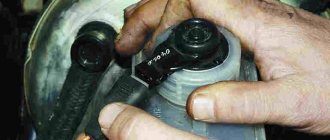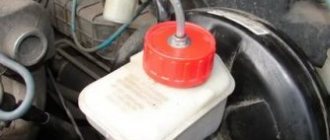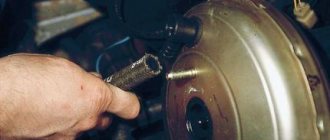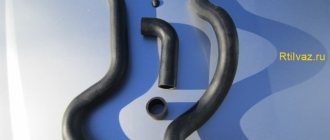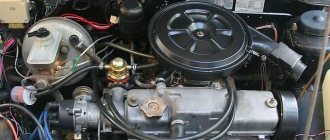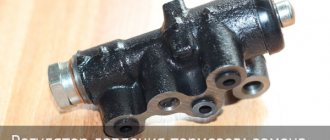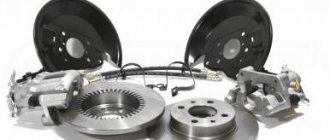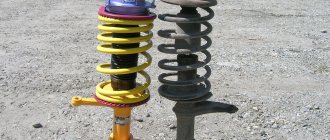Payment for goods and downloading of the book in electronic form (PDF format) is made on the website.
To do this, you need to find the book you are interested in and click on the “Buy” button. The price of the book is indicated on the button.
For convenience, the price on the website for residents of Russia, Belarus and Kazakhstan is presented in rubles.
For residents of Ukraine in hryvnias, and for all other countries - dollars.
After clicking on the “BUY” button, a payment window will open where you can select a payment system with which you can pay for the selected book using any bank card (Visa, MasterCard, MIR, etc.)
When you click on the “Pay by bank card” button, the Portmone payment system will open, which is the easiest way to make a payment.
In addition, the website offers four payment systems for payment:
- Yandex (payment from any bank cards, Yandex Money account, QIWI Wallet, terminals, etc.);
- Portmone (payment from any bank cards, Portmone account);
- PayPal (payment from any bank cards, PayPal account);
- WebMoney (payment from any bank cards, payment from WebMoney wallets).
Vacuum brake booster device
The vacuum brake booster is designed to improve the usability of the braking system. A car without VUT would brake very hard - the force transmitted to the pedal in this case would be very significant, which would affect driving safety for the worse.
The VUT is usually located directly behind the engine shield. Structurally, this element is made in the form of a non-separable metal block connected to the main brake cylinder and the brake fluid reservoir.
The vacuum sealer includes the following elements:
- Frame.
- Separating membrane (made from flexible material).
- Check valve.
- Brake pedal pusher.
- Hydraulic cylinder rod.
- Return spring.
- Follow-up valve.
The principle of operation of the vacuum seal is based on the difference in atmospheric pressure, as a result of which a vacuum is created, which ensures the formation of pressure (and at the same time the transmitted force) in the brake system.
Inside the VUT there is a diaphragm in the form of a partition. Each of the chambers (cavities) separated by a diaphragm is sealed. Moreover, the chambers are equal to each other in volume.
One of the chambers communicates freely with the atmosphere (it is called the atmospheric part), the second is connected to a hose leading from the engine exhaust pipe. On this side, a lower pressure compared to atmospheric pressure is formed. This cavity is called vacuum; it is located on the GTZ side.
The atmospheric chamber, located closer to the brake pedal, contains a reverse valve. It is designed to prevent a decrease in pressure in the intake manifold of the engine. Due to this, fuel cannot enter the VUT mechanism.
The amount of vacuum in this cavity is controlled by a follow-up valve. The vacuum chamber, thanks to the reverse-acting valve, maintains the pressure at the same level. In other words, the membrane experiences the same pressure values from both chambers. The follower valve moves through a pusher, which is connected to the brake pedal. The purpose of the spring is to ensure that the diaphragm returns to its normal state after stopping braking.
In some situations, when the car is equipped with an emergency braking mechanism, the rod is equipped with a specialized electromagnetic drive.
As you can see, the design of the vacuum unit is not so complicated - in some cases, troubleshooting some VUT faults can be done on your own.
Cast iron brake drums
Needless to say, this metal is much stronger, but also many times heavier than its opponent. Some manufacturers sacrifice suspension lightweighting and still install cast iron on their cars.
There are a number of reasons for this, but as you probably guessed, they stem from the competitor’s disadvantages, let’s list:
- Durable. A very durable option in terms of wear and tear.
- The sticking is not so strong; in extreme cases, you can beat them off with a hammer; here you are unlikely to damage them.
- Do not deform from temperature loads.
That's all! Of course there are more disadvantages.
- It is much more difficult to cool down, because of this, braking efficiency decreases.
- Heavy. Create a large load on the vehicle axle.
- Prone to rust. You have to paint the outside , they don't look aesthetically pleasing.
By the way, here is a short video after painting such a drum.
Reinforced ball joints
Any serious manufacturer offers customers a wide range of ball joints: from regular to sports, or reinforced. For example, “Track” supports have a reinforced “Track-Sport” modification.
Reinforced Trek supports always have transparent boots and are painted red
The “Cedar” supports have a reinforced modification “Cedar-trial-sport”, etc.
All of these products, designed for extreme loads, have a number of common features. Let's look at them using the example of Track-Sport supports:
- universal design. This means that reinforced mounts can be installed on both the upper and lower control arms. Moreover, reinforced supports can be installed on other cars (in particular, Track-Sport supports can be installed in the suspension of a Niva car without any problems);
- increased pullout force of the ball rod. In order to tear the rod out of the suspension, a force of 7 thousand kgf must be applied to the Track-Sport support (while on conventional Track supports the force is 5 thousand kgf);
- The mileage guaranteed by the manufacturer for sports ball joints starts from 60 thousand km (for conventional bearings - from 40 thousand km);
- Sports support inserts have a special design. They are stiffer and have special grooves designed to remove excess lubricant and wear products. This technical solution allows you to double the service life of the reinforced support.
Video: review of Track-Sport ball joints
As you can see, there are few reliable manufacturers of ball joints, and the only criterion for choosing these parts is the thickness of the car owner’s wallet. If a person is not short of money, you can immediately purchase LEMFORDER supports and forget about problems with the suspension for several years. In second place is Trek, but here the situation is seriously complicated by the abundance of fakes of this brand. Automotive store shelves are now literally littered with fake Trek. Well, if the issue of price is critical for the driver, then you can pay attention to Belmag products.
The process of replacing the vacuum booster on a VAZ-2110
Vacuum brake booster.
To replace a vacuum brake booster, you must have some knowledge of vehicle design. On a VAZ-2110 it is not so difficult to replace a part with your own hands.
You need to stock up on a set of tools - keys and screwdrivers and you can begin the procedure. Let's consider, step by step, the process of replacing the vacuum brake booster of the VAZ-2110:
- Remove the negative terminal from the battery.
- Disconnect the wire block on the brake fluid level sensor.
Disconnect the power from the brake fluid level sensor.
- We hold the vacuum booster return valve and with the other hand remove the hose from it.
Unscrew the hose from the check valve.
- Remove the master brake cylinder. There are only two nuts, but they can stick.
In the engine compartment, you need to unscrew the two fastening nuts of the brake master cylinder.
- Without disassembling the brake, namely, without disconnecting the brake pipes, we move the master brake cylinder to the side.
We remove the cylinder with tubes from the amplifier.
- From the interior side, unscrew the four nuts securing the brake pedal bracket.
We remove the vacuum booster mounts from the passenger compartment.
- After this, you can dismantle the vacuum booster.
- Using a screwdriver, remove the locking plate of the pin. We push out the finger and disconnect the vacuum booster pusher from the pedal.
Remove the locking plate with the finger.
- Next, we are interested in the two nuts securing the amplifier to the plate, unscrew it, most likely you will have to use wd-40. We dismantle the bracket.
After unscrewing the fasteners, remove the bracket.
- Assembly is carried out in the reverse order of disassembly.
This is what the engine compartment looks like without an amplifier!
Part selection
Amplifier Torgmash.
The original catalog number of the VAZ-2110 vacuum brake booster is 21103510010.
The price of this part is 4000 rubles. In addition, there are a number of analogues that can be used. Thus, the automotive market offers the following non-original parts:
- Pekar 2110-3510010 with an average cost of 2500 rubles.
Pekar 2110-3510010 is an amplifier with a sporty twist.
- DK 2110-3510010 - low quality and cost around 2000 rubles.
- Master-sport 2110-3510010 is an expensive but high-quality product.
Vacuum brake booster master-Sport
Symptoms of malfunction (check options)
There are several signs of a malfunction of the vacuum brake booster, and, accordingly, diagnostics of performance. Let's consider each of the options:
- We start the engine and let it run for a few minutes, after which it is necessary to turn it off. Press the brake pedal several times. During normal operation of the amplifier, the pedal will be depressed the first time, but subsequent times the stroke will be less and less. If the pedal stroke does not decrease the second and subsequent times, then there is a breakdown in the system and the part is not sealed. This means that the vacuum booster needs to be replaced.
- The second option assumes that the first option did not produce any results, and doubts have crept in. Depress the brake pedal and start the engine. With this turn of events, after starting the power unit, the pedal should go all the way down. If this does not happen, then there is an air leak and the amplifier does not work.
- With the engine running, hold down the brake pedal and then turn off the engine. Hold the pedal for another 1.5-2 minutes without releasing it. If there are malfunctions, the pedal will rise.
The amplifier has gaskets and O-rings, and these are the ones that most often fail.
Ball joints from various manufacturers
First of all, it should be said that the ball joint is a very important part. During operation, it is subjected to severe shock loads, so the technical requirements for it are very high. There are very few enterprises capable of meeting these requirements. Let's list the most popular companies.
Ball joints "Track"
Track supports are very popular among VAZ 2107 owners.
The Track ball joint has an optimal combination of quality and price
The reason is simple: these supports are good value for money. Here are the main features of Track ball joints:
- the ball rod in all Track supports is manufactured using cold heading technology, after which it is subjected to heat treatment;
- the ball on the “Track” support rod is always carefully processed, surface roughness class - 10;
- threads on the ball rod are applied only by rolling;
- liners on the “Track” supports are made of a special wear-resistant polymer, which significantly extends the service life of the supports;
- the bearings in the “Track” supports are made of cermets and are thoroughly lubricated, so there are no problems with the sliding of the ball rods;
- The body of the “Track” support is obtained by cold stamping. Then its parts are fastened to each other using spot welding, and between the fastened halves of the body there is always a layer of industrial sealant;
- The support boot is very durable, and what is especially important for our country, is frost-resistant. Due to this, the service life of the boot almost always exceeds the service life of the support itself;
- The body of the Track support is coated with a special coating that reliably protects the support from corrosion.
The manufacturer claims that the Track supports are guaranteed to cover 40 thousand km, and the actual mileage of the supports can reach 100 thousand km or more. The cost of a set of four “Track Champion” supports starts from 1,500 rubles.
Ball joints "Cedar"
In the Kedr ball joints, which are the second most popular among VAZ 2107 owners after the Trek, the manufacturer has implemented several technical innovations that should definitely be mentioned.
Kedr ball joints are always carefully checked using special equipment
These are the features:
- All Kedr ball joints are equipped with a compensator. The manufacturer claims that this part allows you to increase the service life of the support by 30%;
- all “Kedr” support bodies are protected with a special cataphoresis coating, which has increased adhesive properties;
- Before applying the cataphoresis coating, the support bodies are subjected to shot blasting, which guarantees the complete absence of surface defects and dirt on the surface of these parts;
- The material for the liners of all Kedr supports is graphite-filled polyamide. This material is able to halve the friction in the support and thereby increase the service life of the part;
- The anthers on the Kedr supports are made of rubber used in the aviation industry. Rubber has increased oil and gasoline resistance, and is practically immune to sudden temperature changes;
- the rod of the ball joints “Kedr” is coated with a special material “Nilbor-20”, which several times increases the anti-friction characteristics of the rod and reliably protects it from corrosion;
- All Kedr ball rods are monitored using ultrasound for internal defects. Thus, the possibility of marriage is practically excluded.
The manufacturer provides a 18-month warranty on “Kedr” supports (for comparison: the “Trek” supports have a 12-month warranty). The guaranteed mileage of the supports is 40 thousand km. The cost of a set of four “Cedar” supports on the market starts from 1,400 rubles.
Ball joints "Belmag"
It has become not so easy to find Belmag ball joints on the shelves of auto stores.
Finding Belmag supports on the shelves is becoming increasingly difficult
Nevertheless, they are in demand among car owners. Here are some features of these parts:
- Ball rods on Belmag supports are produced using volumetric cold stamping. Subsequently, they are subjected to heat treatment, which exactly meets the requirements;
- blanks for the production of ball rods are provided. It is this manufacturer that supplies rods for AvtoVAZ (in fact, it is their only supplier);
- all workpieces received from are not subjected to eddy current testing, which makes it possible to identify all internal metal defects and obtain a complete picture of the structure of the part;
- each support hinge is capable of withstanding a load of 2.5 tons, this is almost twice the mass of the VAZ 2107, and almost eight times the shock loads acting on the support when driving;
- Each Belmag ball joint has an individual number consisting of six digits. In addition, each support has a hologram, which allows you to further protect the product from counterfeiting.
The cost of a set of four Belmag supports starts from 1,200 rubles.
Ball joints LEMFORDER
The German company LEMFORDER is a recognized global manufacturer of high-quality ball joints. Unfortunately, it is not possible to tell anything specific about the features of production and the technologies used. The Germans simply do not disclose this information, citing trade secrets. On the official website of LEMFORDER you can only read assurances that their supports are of the highest quality, and the most modern technologies are used in their production.
German LEMFORDER ball joints cost twice as much as domestic ones
Practice shows that the Germans tell the truth. The vast majority of VAZ 2107 owners claim the high reliability of LEMFORDER supports (and an equally high price, which, frankly, bites). The cost of a set of 4 LEMFORDER supports for a VAZ 2107 starts from 3 thousand rubles. The warranty period is 2 years.
Device
Hydraulic brakes are installed on the machine and operate generally reliably. They are double-circuit and have a diagonal distribution. That is, if one part suddenly fails, then braking by another circuit is possible. For the sake of safety, the VAZ 2110 brakes operate diagonally, one circuit is the right front and left rear wheels, the other is also diagonal.
This device allows you to brake efficiently (without skidding and other troubles) even in the event of a malfunction, if the brakes in one of the circuits are lost.
Let's consider the design of the brake system. The hydraulic drive includes a vacuum booster, as well as a dual-circuit regulator that creates pressure in the rear brakes.
In addition, the hydraulic drive is equipped with pipelines divided into two circuits, hoses and brake mechanisms that provide braking to the front and rear mechanisms.
The hydraulic drive is activated by a pedal located in the cabin (middle). Here are the main components of the hydraulic drive:
- Vacuum booster. It is designed in such a way that it creates pressure on the master cylinder piston, and thus causes braking; Vacuum brake booster
- Pressure regulator drive. It is through it that the working brake fluid flows to the rear brake mechanisms; Brake pressure regulator drive
- The pressure regulator itself. Already from the name it is clear that this device is responsible for the force of pressure, its decrease or increase. He does this depending on how loaded the rear axle of the car is; Pressure regulator
- Main cylinder with pistons, equipped with a reservoir. The filler neck of the tank is equipped with an emergency fuel level sensor; Master brake cylinder
- Brake mechanism for the front wheel. Its main parts are the disc, pads and wheel cylinders. The mechanism also provides an indicator to prevent complete wear and malfunction of the linings; Front wheel brake
- Brake mechanism for the rear wheel. Unlike the front disc brakes, the rear ones are drum brakes. This is the factory configuration. However, many car owners believe that their device does not provide high-quality braking, and change them to disc ones. Rear wheel brake
The brakes require attention. Without waiting for the warning light to come on, indicating a critical level of fuel fluid or wear of the linings, and even more so, without allowing the brakes to completely disappear, you need to carry out preventive checks.
Particular attention should be paid to all connections and hoses, since the “escaped” brake fluid will not make it possible to brake, and from here it’s not far from tragedy.
